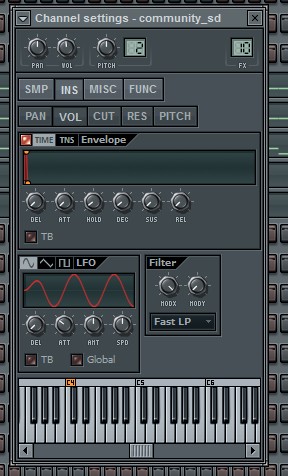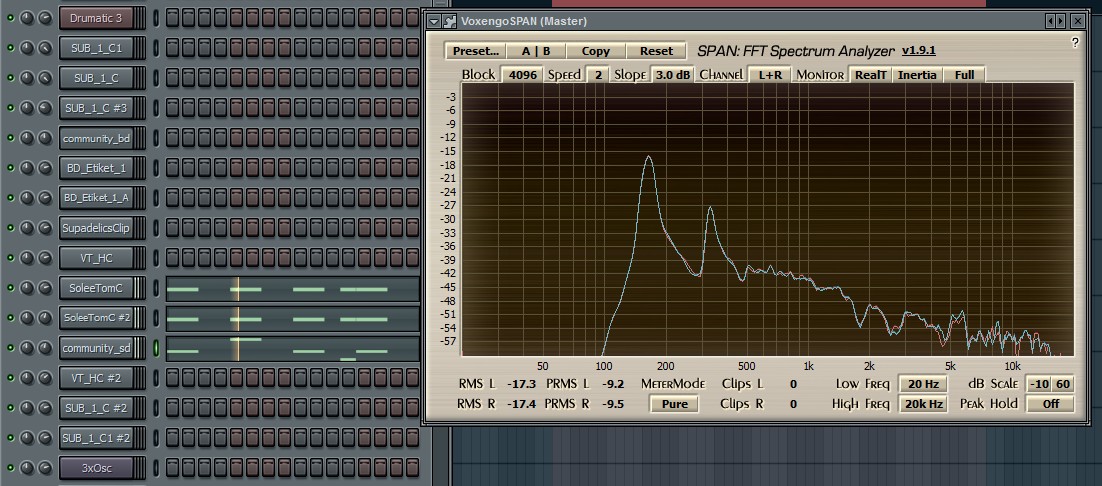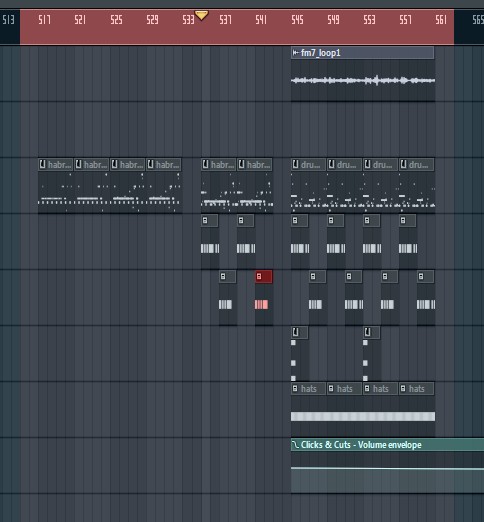Ways to improve the sound of instruments using Layering technology
I asked the article to post it istinspring he lacks karma. If you like the article, do not forget to add it, it can write many more.
In this “pilot” article I will try to set forth the basic concept as far as possible and give a couple of mp3 fragments as examples. If this topic turns out to be interesting, it is quite possible that I will describe some points in more detail.
I think many people have noticed that the instruments in the mix do not sound as we would like. It seems to be all that, but the sound is kind of sluggish, dim, as if something is missing. While on the “proprietary” recordings, even a sinusoid sounds “bold”. In fact, there are many reasons for this, but in my opinion we will focus on the most important one.
')
The fact is that in modern electronic music apply such a technique as Layering. Those. layering. In other words, each instrument is created in layers, allowing you to get a unique timbre with great potential for different variations and experiments.

Meet, this is SoleeTomC - a sample with a difficult fate, was cut from some techno-track in 2006 and for a long time lay practically idle until its potential was discovered and rethought. I tweaked it exactly under the note C (before) and began to make drum loops playing this sample like the simplest melodies. Technically, this is the classic 808Tom (the sound of a Roland TR808 drum machine).
In general, the sample is very good, sounds interesting, but something is clearly not enough, and in the mix it will sound dull. And no matter how much you pull the frequencies with the equalizer, it will not work - they simply do not exist and only normal noise and dirt will increase.
On the spectral analyzer it looks like this:

Remembering the leereng, you can do this: clone the instrument and raise its tone an octave higher, slightly lower the volume and (using the ADSR envelope) leave one attack from it. ABOUT! Already better. There was a pronounced additional harmonic + a small pleasant dissonance.
This is an ADSR envelope

And so the final signal looks like in a Voxengo SPAN spectral analyzer (very good and free)

As you can see, another harmonic appeared, at the same time closing the “hole” in the region of 400 Hz.
But again, I want more. Yes, I think there is not enough pinch of “warm analog” noise, which is so loved by connoisseurs of warm tube sound! Snarr (snare - ringing drummer) went into motion, cutting off everything below 6k hertz, tidying up the high frequencies, I made it short (adjusting the ADSR envelope, they also say “highlighted attack”) and got a kind of “dirty” click. What added some high frequencies to the final signal, due to which, probably, in the mix, the readability of the instrument will improve.

Final signal

Because The snare tool (as a rule) atonal (in other words, not having any specifically pronounced tone) can be played a bit by changing its characteristics while playing a loop, making it more “alive” by ear (as, for example, in instrumental music - every pinch the strings produce a slightly different sound)

FL Studio provides very convenient options for routing sound tracks and working with tracks, they say (and I absolutely agree with this) that FL Studio is one of the most convenient mixer (if you compare, for example, with Cubase).
As a result, we have such a loop. In the beginning, it plays just SoleeTomC, then it is with an additional octave, then with noise. At the end there is a couple of bars of the final loop

Loop

After sitting for several hours I got something like this: Track
Thus, layering various instruments on the layers, we fill the voids in the mix, enrich the instruments with additional harmonics, and create a new, unique sound that, moreover, is very easy to transform and change along the track.
By the same “layering” principle, any instrument / sample can be ennobled - a drum, bass, robe, etc.
Create interesting effects, new sounds. For example - in order to give a “space” to a barrel, you can mix a click with a reverb processed to it. Free space for activities and the coast of fantasy.
By the way, a few days ago we finally launched a new website for the digital drum-n-bass label Tamrecords , together with Zhenya Bes'om rewrote everything to python / django, but that's another story. =)
In this “pilot” article I will try to set forth the basic concept as far as possible and give a couple of mp3 fragments as examples. If this topic turns out to be interesting, it is quite possible that I will describe some points in more detail.
I think many people have noticed that the instruments in the mix do not sound as we would like. It seems to be all that, but the sound is kind of sluggish, dim, as if something is missing. While on the “proprietary” recordings, even a sinusoid sounds “bold”. In fact, there are many reasons for this, but in my opinion we will focus on the most important one.
')
The fact is that in modern electronic music apply such a technique as Layering. Those. layering. In other words, each instrument is created in layers, allowing you to get a unique timbre with great potential for different variations and experiments.
What is layering in music? What is lahering in music?
This is a tonal, diminished sound.
Layering is when you add more and more layers of different instruments to each other, creating a more tonal, spatial sound.

Meet, this is SoleeTomC - a sample with a difficult fate, was cut from some techno-track in 2006 and for a long time lay practically idle until its potential was discovered and rethought. I tweaked it exactly under the note C (before) and began to make drum loops playing this sample like the simplest melodies. Technically, this is the classic 808Tom (the sound of a Roland TR808 drum machine).
In general, the sample is very good, sounds interesting, but something is clearly not enough, and in the mix it will sound dull. And no matter how much you pull the frequencies with the equalizer, it will not work - they simply do not exist and only normal noise and dirt will increase.
On the spectral analyzer it looks like this:

Remembering the leereng, you can do this: clone the instrument and raise its tone an octave higher, slightly lower the volume and (using the ADSR envelope) leave one attack from it. ABOUT! Already better. There was a pronounced additional harmonic + a small pleasant dissonance.
This is an ADSR envelope

And so the final signal looks like in a Voxengo SPAN spectral analyzer (very good and free)

As you can see, another harmonic appeared, at the same time closing the “hole” in the region of 400 Hz.
But again, I want more. Yes, I think there is not enough pinch of “warm analog” noise, which is so loved by connoisseurs of warm tube sound! Snarr (snare - ringing drummer) went into motion, cutting off everything below 6k hertz, tidying up the high frequencies, I made it short (adjusting the ADSR envelope, they also say “highlighted attack”) and got a kind of “dirty” click. What added some high frequencies to the final signal, due to which, probably, in the mix, the readability of the instrument will improve.

Final signal

Because The snare tool (as a rule) atonal (in other words, not having any specifically pronounced tone) can be played a bit by changing its characteristics while playing a loop, making it more “alive” by ear (as, for example, in instrumental music - every pinch the strings produce a slightly different sound)

FL Studio provides very convenient options for routing sound tracks and working with tracks, they say (and I absolutely agree with this) that FL Studio is one of the most convenient mixer (if you compare, for example, with Cubase).
As a result, we have such a loop. In the beginning, it plays just SoleeTomC, then it is with an additional octave, then with noise. At the end there is a couple of bars of the final loop

Loop

After sitting for several hours I got something like this: Track
Thus, layering various instruments on the layers, we fill the voids in the mix, enrich the instruments with additional harmonics, and create a new, unique sound that, moreover, is very easy to transform and change along the track.
By the same “layering” principle, any instrument / sample can be ennobled - a drum, bass, robe, etc.
Create interesting effects, new sounds. For example - in order to give a “space” to a barrel, you can mix a click with a reverb processed to it. Free space for activities and the coast of fantasy.
By the way, a few days ago we finally launched a new website for the digital drum-n-bass label Tamrecords , together with Zhenya Bes'om rewrote everything to python / django, but that's another story. =)
Source: https://habr.com/ru/post/141859/
All Articles